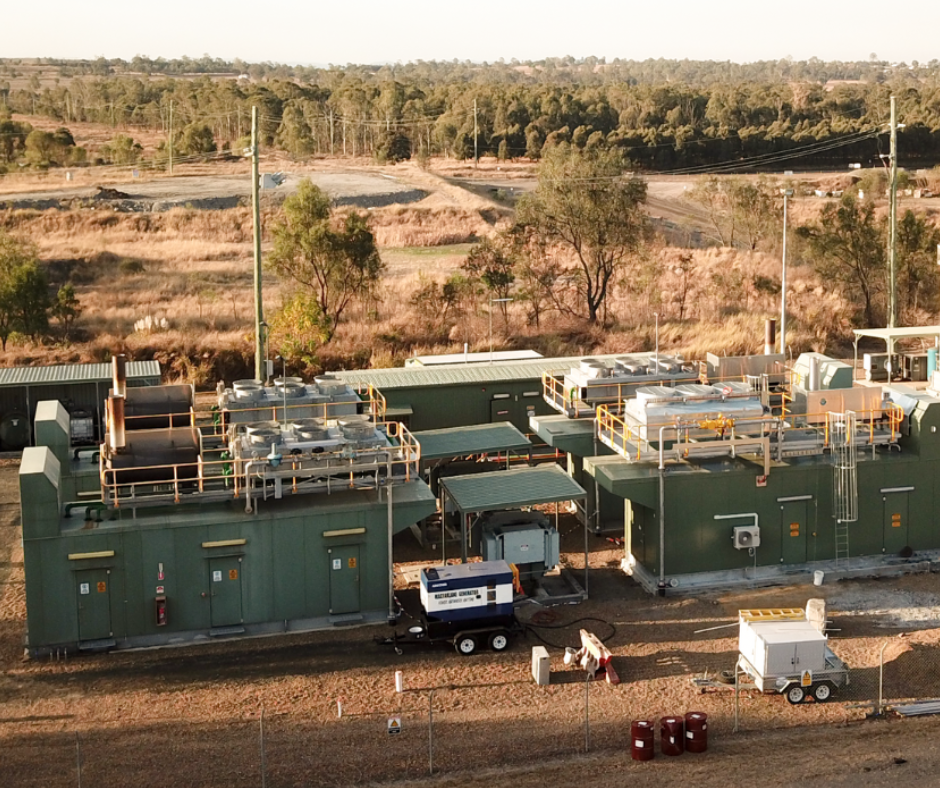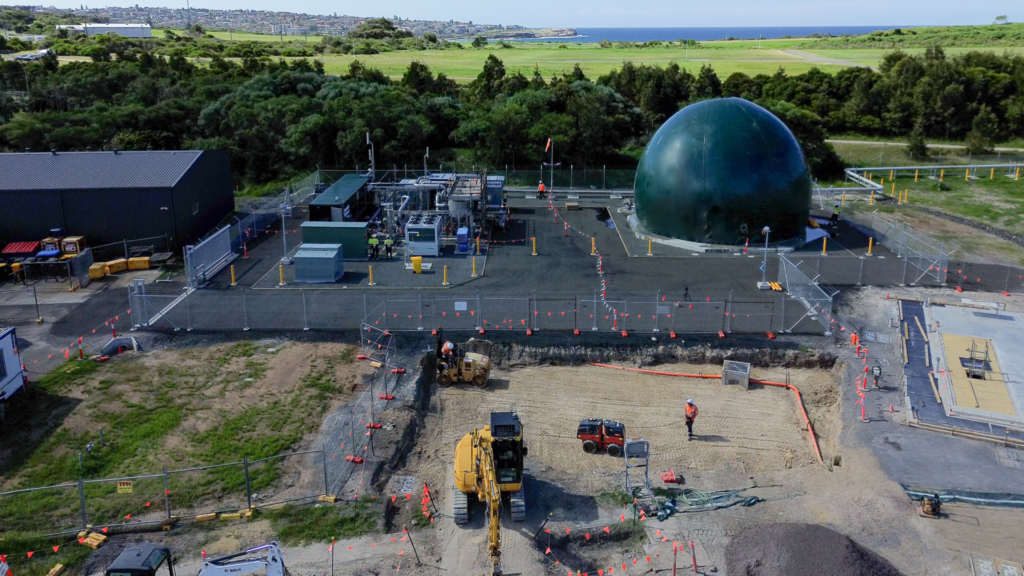What is biogas? | Anaerobic Digestion | Combined Heat & Power
Interested in harnessing the power of renewable gas? Fill out our Biogas Questionnaire to help us find you a powerful solution, no matter your project size or stage.
Take me to the formWhat is Biogas? How is biogas formed?
Biogas is a form of renewable energy derived from the anaerobic digestion of organic matter, such as agricultural waste, food scraps, and animal manure. During this anaerobic decomposition process, primarily methane and carbon dioxide gases are emitted, constituting what is known as biogas.
This resource holds immense potential as an environmentally sustainable energy source. Its domestic applications span heating, cooking, and electricity generation, and for large energy users, it represents an opportunity to replace and or/reduce the reliance on fossil fuels.
Notably, the utilisation of biogas significantly mitigates greenhouse gas emissions that would otherwise occur during the natural decomposition of these organic materials.

A landfill gas to energy site in Queensland, Australia.
Composition of Biogas
The typical composition of biogas consists primarily of methane (CH4) and carbon dioxide (CO2), along with trace amounts of other gases. The percentage of methane and carbon dioxide can vary depending on the feedstock and the specific conditions of the anaerobic digestion process.
On average, biogas composition often ranges approximately between:
- Methane (CH4): 50% to 70%
- Carbon Dioxide (CO2): 30% to 50%
The actual ratio of methane to carbon dioxide can fluctuate due to factors like the type of organic material being digested, the temperature, the efficiency of the anaerobic digestion process, and the presence of other gases like hydrogen sulphide and traces of nitrogen and oxygen.
For biomethane—after the upgrading process—the methane content is typically increased to around 95% or higher, significantly reducing the carbon dioxide content and making it comparable to natural gas quality.
What is Anaerobic Digestion?
Anaerobic digestion is a natural biological process where microorganisms break down organic materials in the absence of oxygen. It’s a bit like composting but without the presence of air.
During anaerobic digestion, bacteria, and other microorganisms break down biodegradable materials such as food scraps, agricultural waste, animal manure, and sewage sludge. These microorganisms thrive in an oxygen-deprived environment and transform the organic matter into biogas and nutrient-rich byproducts like digestate.
The breakdown happens in different stages: first, complex organic compounds are broken down into simpler molecules by acid-forming bacteria. Then, methane-producing bacteria convert these simpler molecules into biogas, which is primarily composed of methane and carbon dioxide.
This process not only generates biogas used for energy but also helps in waste management by reducing the volume of organic waste and producing valuable byproducts that can be used as fertilisers. Anaerobic digestion is a sustainable way to manage organic waste while producing renewable energy.
Anaerobic Digestion & Biogas – Key Benefits
- Renewable Energy Source: Biogas derived from anaerobic digestion serves as a renewable energy resource that can be used for heating, electricity generation, and as a fuel source.
- Greenhouse Gas Reduction: It significantly reduces greenhouse gas emissions by capturing methane, a potent greenhouse gas, which would otherwise be released during the natural decomposition of organic waste.
- Waste Management: Anaerobic digestion provides an eco-friendly solution for managing organic waste materials such as food scraps, agricultural residues, and animal manure, reducing their volume and mitigating environmental pollution.
- Resource Recovery: Beyond biogas, the process yields valuable byproducts like digestate, a nutrient-rich fertiliser that can be used in agriculture, thereby closing the loop in resource recovery.
- Energy Independence: It promotes energy self-sufficiency and reduces dependency on non-renewable energy sources by utilising locally available organic waste materials for biogas production.
- Environmental Sustainability: The utilisation of biogas contributes to a more sustainable and circular economy by converting waste into energy and valuable byproducts, reducing the environmental impact of waste disposal.
Biogas CHP
Biogas CHP stands for Combined Heat and Power, which involves the simultaneous generation of electricity and useful heat from biogas in a single process. It’s a highly efficient energy production method that maximizes the utilisation of biogas.
In a Biogas CHP system:
Electricity Generation: The biogas is used as fuel to power an engine or a turbine, which drives a generator to produce electricity. This electricity can be used on-site or fed into the grid.
Heat Recovery: Alongside electricity generation, the heat produced during the process—usually a byproduct—is captured and used for heating purposes. It could be used for heating buildings, providing hot water, or for industrial processes.
This combined approach is extremely efficient compared to separate generation methods because it makes use of the waste heat that would otherwise be lost in conventional power generation. Biogas CHP systems are widely used in various settings, including agricultural facilities, wastewater treatment plants, and industries, as they offer both energy efficiency and environmental benefits by maximising the value obtained from biogas production.
Biogas to Biomethane Upgrading
Biogas to biomethane upgrading is a process that refines raw biogas—typically composed of methane and carbon dioxide—into a higher purity gas called biomethane. This upgraded biomethane is almost pure methane and can be used interchangeably with natural gas.
The upgrading process involves several purification steps to remove impurities, primarily carbon dioxide, to meet the quality standards required for injection into the natural gas grid or for use as a transportation fuel. There are various methods for upgrading biogas to biomethane, including:
Pressure Swing Adsorption (PSA): This method uses adsorbent materials to selectively capture carbon dioxide, allowing purified methane to pass through.
Water Scrubbing: In this process, carbon dioxide is removed by scrubbing the biogas with water or other solvents, separating methane from the carbon dioxide.
Membrane Separation: This technique uses semi-permeable membranes to selectively separate carbon dioxide from methane based on their molecular size and properties.
The goal of this upgrading process is to increase the methane content in the biogas to reach biomethane standards, enabling its use in existing natural gas infrastructure, transportation, or other applications where high-purity methane is required. This upgraded biomethane serves as a valuable renewable energy source derived from organic waste materials.

The Malabar Biomethane Injection Plant, Australia’s first working biomethane to grid injection facility, featuring equipment from Eneraque Renewables.
Gas Quality and Contaminants
Biogas typically contains various contaminants, which can vary based on the feedstock and the specific conditions of the anaerobic digestion process. Some common contaminants found in biogas include:
Carbon Dioxide (CO2): A major component alongside methane, though it’s not considered a contaminant per se, but it needs to be reduced for biomethane production.
Hydrogen Sulphide (H2S): Often present due to the decomposition of sulphur-containing compounds in organic matter; it’s highly corrosive and needs to be removed due to its damaging effects.
Siloxanes: These are compounds found in various household and industrial products; when present in biogas, they can cause damage to engines and equipment.
Moisture: Water vapour in biogas can cause corrosion in pipelines and equipment and needs to be removed for efficient usage.
Trace Elements: Biogas may contain trace elements such as ammonia, nitrogen, oxygen, and sometimes volatile organic compounds (VOCs), which can impact combustion efficiency and equipment operation.
Removing or reducing these contaminants is crucial, especially for applications like biomethane production or utilisation in engines and turbines, to ensure the efficiency and longevity of equipment and to meet the required quality standards for different uses of biogas. Various purification processes are employed to clean and upgrade biogas to meet specific requirements.

